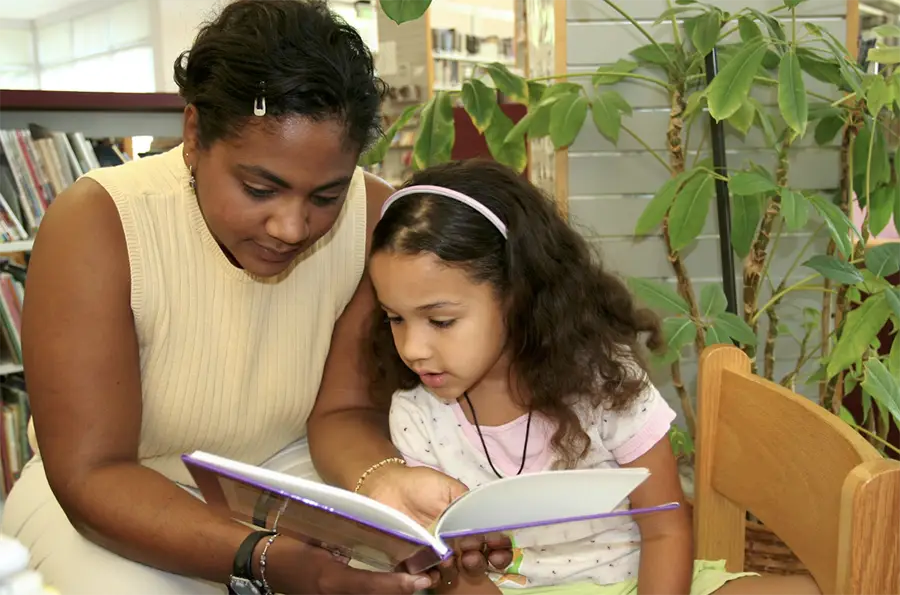LEARNING FROM EXPERTS
Author Studies in the Classroom
Introduction | Background Knowledge | Activities | Extensions | Standards

Introduction
Think of your favorite author. Why do you love this author? Do they write books where you see yourself as the main character? Do they write true crime stories that keep you on the edge of your seat? Are all of their books set in your favorite place?
Students can learn more about authors lives and how their books may be connected through author studies

Background Knowledge
An author study is a deep dive into the life and works of a single writer. This analysis allows students to evaluate an authors use of theme, character development, and writing style. Readers can start to see connections between the authors personal life and their writing.
There are three main types of author studies. The first focuses on the connection between the authors life and their writing. The second focuses on the writing and does not consider the authors life. The third type of author study focuses on the readers personal response to the text. Author studies can include one or all of these focuses. The best author studies combine elements of all three focuses for a "multiple response" author study.
After narrowing the purpose and focus of the author study, the next step is to choose an author. Consider an author who has written numerous books. Always keep the instructional goals in mind. For example, Gail Gibbons is a prolific author who has written many student-friendly nonfiction books on various topics. She would not be a good choice if the instructional focus is character development.
Begin sharing the authors books with students. The initial introduction to the author would be the most effective if read aloud. If the book is not a picture book, start by sharing the first chapter. After the initial reading, read the authors books aloud or transition to having students read independently. Carve out dedicated time for this reading each day.
While reading, model the expected reading response for the students. Determine how students will respond. Suggestions for response include:
- Dialogue journal - Students and teachers (or other students) write letters back and forth, discussing the text
- Two-column notes - Students summarize chunks of text in the left column and write their responses/reactions in the right column.
After reading and responding to one or more titles, students research the author. Look for autobiographies, interviews, or personal websites to start.
Finally, put all of the information together into a culminating project. Students share what they have learned about the author, the writing style, and their observations and reflections about the writing.

Activities
-
Dive deeper into author studies with the ADLit Authors Study Toolkit for older students and the Reading Rockets Authors Study Toolkit for younger students.
- Engage students in your author studies by asking them to share their favorite authors to consider during your activities. Use Google Jamboard (TeachersFirst review) and ask students to add authors names to your slide. Save your Jamboard for use throughout the year to find authors that interest your students.
-
Explore authors through video interviews for older students and younger students. After researching the author, students can work in pairs to script their author interviews, with one student acting as the interviewer and one acting as the author. There are also resources on Virtual Author Resources and Scholastic StoryVoice.
- Help students plan their interviews and prepare a script using Storyboarder (TeachersFirst review).
- Record author interviews as part of ongoing podcast episodes to share with peers and family members. Buzzsprout (TeachersFirst review) is an easy-to-use podcasting resource that offers tools for recording and sharing podcasts. Free accounts provide up to two hours of hosting time per month.
-
Bring technology into the culminating project!
- Create a timeline of the authors life and writing with Venngage Timeline Maker (TeachersFirst review).
- Create a tableau of scenes from the authors various works. Take pictures of the tableau and put them into a slideshow.
- Create a comic strip about the author using Adobe's Comic Strip Template (TeachersFirst review).

Extensions
-
Becoming Authors
-
After students have compiled their writing portfolios near the end of the year, they can pair with another class for author studies. Students can exchange portfolios and read each others writing. This study can turn into an author visit.
- Book Creator (TeachersFirst review) is an excellent collaborative tool for creating and sharing books with multimedia features. Use Book Creator to publish multimedia portfolios that include audio, video, images, and more.
-
After students have compiled their writing portfolios near the end of the year, they can pair with another class for author studies. Students can exchange portfolios and read each others writing. This study can turn into an author visit.
-
Author Visits
-
Author visits are a great way to culminate an author study! These resources are good for connecting with authors who will meet with students.
- How to Coordinate Virtual Author Visits - information about how to plan for and execute an author visit
- Online Author Visits - information about planning an author visit
- The Author Village - a list of authors to contact with their contact information
-
Author visits are a great way to culminate an author study! These resources are good for connecting with authors who will meet with students.
Correlation to Standards
-
AASL National School Library Standards
- Inquire Shared Foundation, Think Domain - Learners display curiosity and initiative by: 1. Formulating questions about a personal interest or a curricular topic. 2. Recalling prior and background knowledge as context for new meaning.
- Inquire Shared Foundation, Share Domain - Learners adapt, communicate, and exchange learning products with others in a cycle that includes: 1. Interacting with content presented by others. 2. Providing constructive feedback. 3. Acting on feedback to improve. 4. Sharing products with an authentic audience.
- Include Shared Foundation, Share Domain - Learners exhibit empathy with and tolerance for diverse ideas by: 1. Engaging in informed conversation and active debate. 2. Contributing to discussions in which multiple viewpoints on a topic are expressed.
- Include Shared Foundation, Grow Domain - Learners demonstrate empathy and equity in knowledge building within the global learning community by: 1. Seeking interactions with a range of learners.
- Collaborate Shared Foundation, Think Domain - Learners identify collaborative opportunities by: 1. Demonstrating their desire to broaden and deepen understandings. 2. Developing new understandings through engagement in a learning group. 3. Deciding to solve problems informed by group interaction.
- Collaborate Shared Foundation, Create Domain - s Learners participate in personal, social, and intellectual networks by: 1. Using a variety of communication tools and resources. 2. Establishing connections with other learners to build on their own prior knowledge and create new knowledge.
- Collaborate Shared Foundation, Grow Domain - Learners actively participate with others in learning situations by: 2. Recognizing learning as a social responsibility.
- Explore Shared Foundation, Think Domain - Learners develop and satisfy personal curiosity by: 1. Reading widely and deeply in multiple formats and writing and creating for a variety of purposes.
- Explore Shared Foundation, Create Domain - Learners construct new knowledge by: 1. Problem solving through cycles of design, implementation, and reflection.
- Explore Shared Foundation, Share Domain - Learners engage with the learning community by: 3. Collaboratively identifying innovative solutions to a challenge or problem.
- Explore Shared Foundation, Grow Domain - Learners develop through experience and reflection by: 1. Iteratively responding to challenges. 2. Recognizing capabilities and skills that can be developed, improved, and expanded. 3. Open-mindedly accepting feedback for positive and constructive growth.
-
ISTE Standards for Students
- Empowered Learner - 1b. Students build networks and customize their learning environments in ways that support the learning process. 1c. Students use technology to seek feedback that informs and improves their practice and to demonstrate their learning in a variety of ways.
- Knowledge Constructor - 3d. Students build knowledge by actively exploring real-world issues and problems, developing ideas and theories, and pursuing answers and solutions.
- Innovative Designer - 4d. Students exhibit a tolerance for ambiguity, perseverance, and the capacity to work with open-ended problems.
- Global Collaborator - 7c. Students contribute constructively to project teams, assuming various roles and responsibilities to work effectively toward a common goal.
